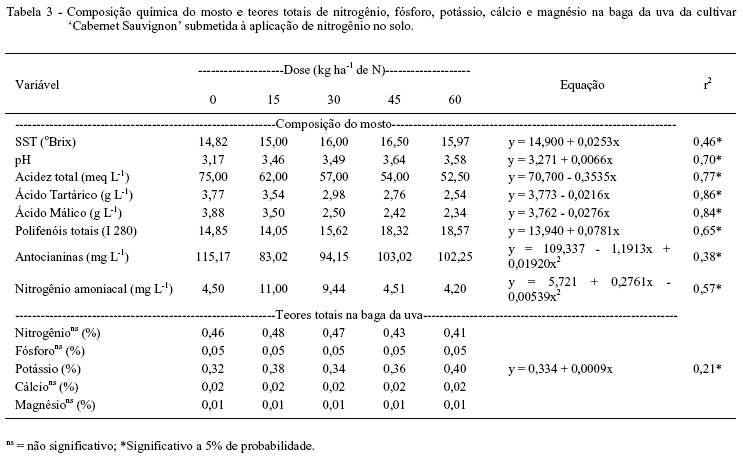Fertilization of grapevines with N is generally accomplished to supply the demand for N. However N should be used with prudence because affect the yield and chemical composition of the grape and your must. The experiment was carried out in 2004/05, to evaluate the effect of N fertilization on the grape yield and on the chemical composition of the grape and must of Cabernet Sauvignon grapevines, at Udorthent soil at Southern Brazil, Bento Gonçalves city. The treatments were control, 15, 30, 45 and 60kg ha-1 N, added during the vegetative and productive period. In the maturation, the grape was collected. Grape yield by plant and by hectare, length and width of bunches were evaluated and 100 berries were weighted. Berries were collected and a part of them was used to evaluate soluble solids in the must, pH, total acidity, tartaric acid, malic acid, total phenols, anthocyanins and N ammonia. The remaining berries were triturated and used to evaluated total N, P, K, Ca and Mg. The results showed that the yield of Cabernet Sauvignon grapevines in soils with medium content of organic matter is maximum with the fertilization of 15 and 30kg ha-1 N. The N fertilization increased the values of ammonia in the must and potassium percentage in the berry, but decreased the values of anthocyanins, what interferes the color of red wines and the formation of precipitate
Vitis vinifera; nitrogen; yield components; must




